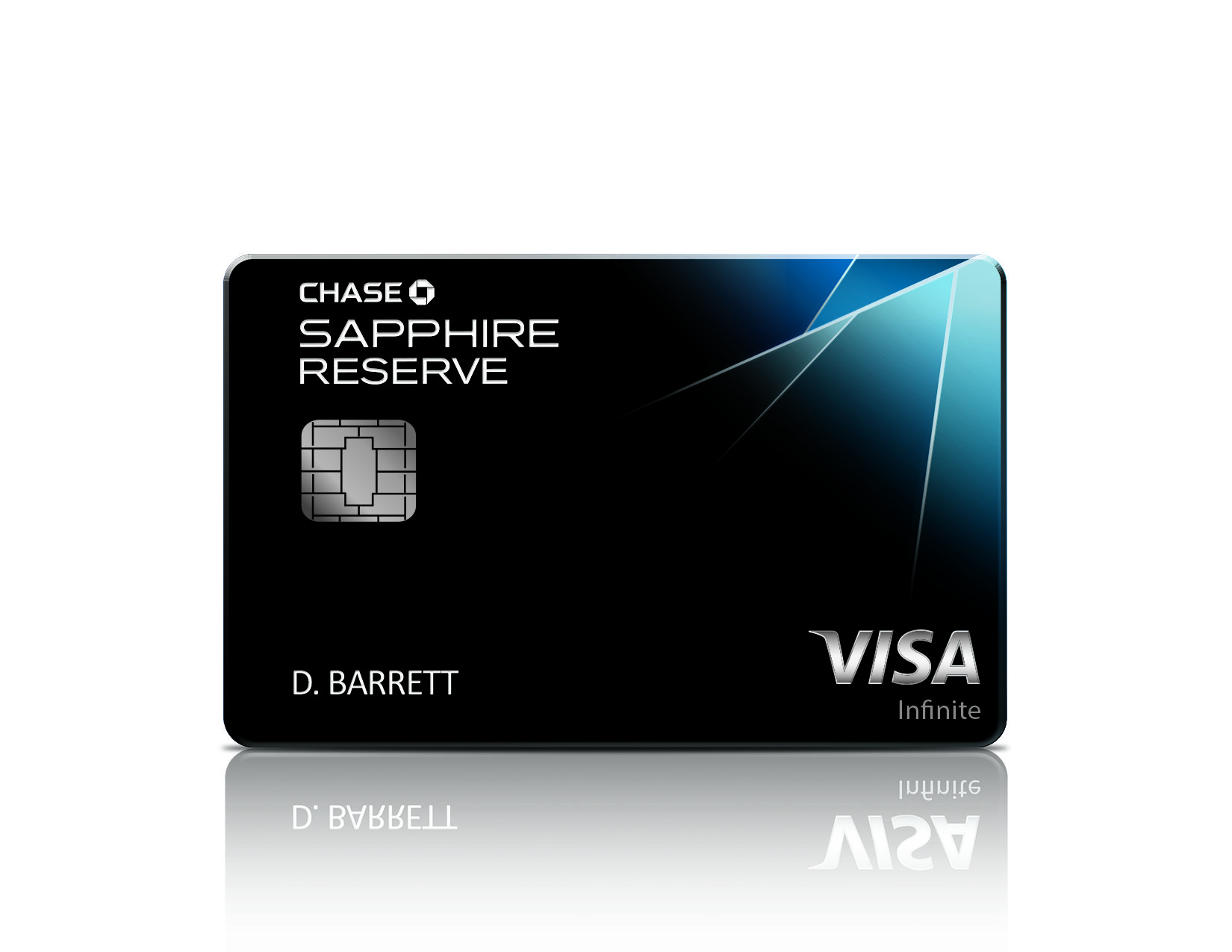The summer of 2016 was a very memorable one in the world of points and miles. One of the highlights was when Chase entered the Premium Card market with a beefed-up version of the Sapphire Preferred. This new card was called the Chase Sapphire Reserve. The rest of 2016 saw Chase losing millions of dollars but gaining a plethora of new customers.
The Sapphire Reserve is a great card for many travelers because of its earning structure and numerous perks. Its membership in the Chase Ultimate Rewards (UR) points “ecosystem” also makes it very versatile. However, Chase devalued the Sapphire Reserve in January 2020. They increased its annual fee to $550 and added some new benefits. But the new benefits might not be enough to justify the annual fee increase for many travelers.
Earning
The Sapphire Reserve offers a sign-up bonus worth 50,000 UR points. It can be earned by spending $4,000 within the first three months. Chase offered a bonus worth 100,000 UR points for the Reserve when it first came out in 2016. But that was short-lived as it cost Chase millions of dollars.
Furthermore, the Sapphire Reserve earns 10x UR points per dollar on dining and hotel stays purchased from the Chase travel portal. It also earns 5x points per dollar on airfare purchased through the portal. Dining and general travel purchases that are not purchased through the portal earn 3x points and all other purchases earn just one point per dollar.
Chase has a broad list of what is included in their travel and dining categories. Some travel purchases that count include airfare, hotel stays, car rentals, and tolls. Dining purchases include restaurants, fast food places, coffee shops, and bars. Furthermore, the Sapphire Reserve also earns 10x UR points on Lyft purchases. This is nice for those who like ride sharing services.
The Sapphire Reserve is a fantastic card on its own. But its potential can truly be maximized if you have multiple UR-earning Chase cards. If you have a Freedom Card and/or an Ink Business Card, you can earn points with those cards and transfer them to your Sapphire Reserve account. This feature is arguably the most powerful that Chase has to offer.
Burning
Earning points is fantastic, but points earned are useless if you cannot redeem them for anything of value. Chase has multiple options for redemption:
Transfer Partners
Transfer partners are by far Chase’s most valuable option. They are the reason why so many points and miles enthusiasts love Ultimate Rewards so much. With Chase, the name of the game is quality over quantity. Chase has the following transfer partners:
Hotels
- IHG
- Marriott
- World of Hyatt
Airlines
- Aer Lingus
- Air Canada
- British Airways
- Emirates
- Iberia
- JetBlue
- KLM Flying Blue / Air France
- Singapore Airlines
- Southwest Airlines
- United Airlines
- Virgin Atlantic
Your mileage may vary for each partner. But for most partners, you should be able to easily redeem your points for at least 1.5 cents per point (CPP).
Other Options
Chase provides cardholders the option of booking travel through its travel portal at a fixed rate of 1.5 CPP. You should use the portal if you cannot redeem your points for more than the fixed rate. The Sapphire Reserve is the only card that earns the higher 1.5 CPP rate for the travel portal.
Chase also lets cardholders redeem their points for cash back and gift cards at 1 CPP. Sometimes, Chase discounts some of their gift card options, enabling cardholders to redeem for more than 1 CPP.
Neither cash back or gift cards are recommended because you can extract more value from UR points when redeeming for travel.
Benefits
As a premium travel card, Chase includes some great benefits to make life easier when away from home. The Sapphire Reserve is nice because it strikes a balance between perks and earning. Nonetheless, it doesn’t have as many perks as the American Express Platinum Card.
$300 General Travel Credit
This perk is a favorite of many travelers because it is so versatile and easy to use. You receive $300 in statement credits for general travel purchases. This credit is the best way to make up for part of the Reserve’s $550 annual fee. The credit is not restricted to just airfare, hotels, or incidentals, making it very accessible.
All purchases that are normally under Chase’s “Travel” bonus category are eligible. But you cannot receive 3x points and use the credit at the same time.
Door Dash Benefits
The Chase Sapphire Reserve is offering DoorDash benefits until the end of 2021. Benefits include a $60 annual DoorDash credit (for 2021) and DashPass membership for up to two years. This is huge for those who want food delivered to their house instead of going out to eat.
Lyft Pink Membership
Lyft Pink membership is a great way to save money when using Lyft. This benefit usually costs $20 per month and members will save 15% on Lyft rides along with other benefits.
SBE Hotel Benefits
SBE is not an ordinary hotel chain. In fact, they are a hospitality and hotel management company with a “suite” of luxurious hotels. Chase added these SBE hotel perks to the Sapphire Reserve in March 2019. You will receive the following benefits at one of participating properties:
- Fourth night free (only applies to if four consecutive nights are booked)
- $30 hotel credit per room, eligible towards food and beverage
- Complimentary hotel room upgrades (when available)
- Complimentary Wi-Fi
- Daily continental breakfast for two people
- Late check out (when available)
This series of benefits is likely Chase’s way of competing with the Citi Prestige while targeting more wealthy customers. I appreciate that they’re doing something different as a way to add value to their flagship travel card.
Priority Pass Airport Lounge Access
This perk gives you access to over 10,000 Priority Pass airport lounges around the world. The lounges give you a nice space to relax, eat, drink, and get ready before boarding your flight.
Global Entry / Pre-TSA Fee Credits
You will receive a credit once every 4-5 years to waive the fee for either program. I suggest going with Global Entry because Pre-TSA comes with that membership automatically.
Primary Car Rental Insurance
This benefit covers the entire loss, damage, or theft of your car rental. Because Chase offers Primary coverage with this card, you don’t have to accept the car rental company’s insurance policy if you use your Sapphire Reserve.
Premium Chase cards are some of the only ones in the industry that offer primary car rental insurance. Some issuers (such as American Express) offer secondary coverage while others (like Citi) do not offer any coverage.
No Foreign Exchange Fees
This benefit saves you 3% on all purchases made outside of the United States.
Trip Cancellation / Trip Interruption Insurance
If you need to cancel your trip because of an unexpected event, this benefit gives you up to $10,000 per trip for non-refundable expenses. Plane tickets, hotel rooms, and tours are included.
Trip Delay Insurance
This benefit covers you up to $500 per ticket if your plane, train, or other common carrier is delayed at least 6 hours. It also kicks in if you require an overnight stay as a result of a delay. The $500 helps cover expenses such as meals and lodging.
Baggage Delay Insurance
This benefit gives you $100 per day up to five days if your luggage is lost or delayed. If your luggage is delayed for more than 6 hours, you can redeem for toiletries, clothing, and other essentials.
Purchase Protection
This benefit covers new purchases up to 120 days against damage or theft. There is a maximum of $10,000 per claim and $50,000 per calendar year. Nonetheless, having purchase protection makes using the Sapphire Reserve for major purchases that can break a wise decision.
Return Protection
This benefit covers purchases that you want to return but the merchant or manufacturer will not take back. There is a maximum of $500 per claim and $1,000 per calendar year. And you must file a claim within 90 days of purchasing the product you want to return.
Extended Warranty
This perk extends the time period of a product’s manufacturer’s warranty by an additional year. Eligible warranties of three years or less are included.
Rules & Regulations
Chase has two major rules in place to prevent “churners” from scoring their sign-up bonuses too many times. These rules are the 5/24 Rule and the One Sapphire Rule.
The 5/24 rule states that you will not be approved for any UR-earning card if you were approved for five or more new accounts in the last 24-months. All Chase cards fall under this rule as well.
The One Sapphire Rule states that your will not be approved for the Sapphire Preferred or Sapphire Reserve if you received a sign-up bonus within the last 48 months. It also applies to the discontinued no annual fee Sapphire card.
Similar Cards
Chase Sapphire Preferred
The Chase Sapphire Preferred Card is the Sapphire Reserve’s little “sibling”. It earns 5x UR points on travel purchased through the Chase Ultimate Rewards portal. It earns 3x UR points per dollar on dining, select streaming services, and online grocery expenses. It also earns 2x UR points on general travel expenses and just one point for all other purchases.
The Preferred has a $95 annual fee (not waived the first year) and is a better card for beginners and those with another premium card. Those who don’t want to spend $550 per year for a credit card are better off with the Preferred.
Cardholders have access to the same travel partners and other redemption options as the Sapphire Reserve. But the travel portal fixed rate is lower, and the insurances are a bit more restrictive.
Plus, Chase is offering a sign-up bonus worth 80,000 UR points for the Preferred. It can be earned after spending $4,000 within the first three months. This bonus is 30,000 points higher than the Reserve’s bonus. Plus the Sapphire Preferred is easier to get approved for because it’s minimum possible credit limit is $5,000. That’s half of the minimum possible credit limit for the Reserve.
American Express Platinum Card
The American Express Platinum Card earns Membership Rewards (MR) points. You earn 5x MR points on airfare booked directly with the airline and on amextravel.com. It also earns one point per dollar on non-bonus spend.
However, perks are where this card truly shines. The Sapphire Reserve offers only a few of the benefits that the Platinum Card offers. The Platinum Card has the potential to earn you thousands in value from perks if you can deal with Amex’s rules and gimmicks.
Both cards can be complements to each other if you’re willing to pay at least $1,000 per year in total annual fees. The Sapphire Reserve can be used for spending while the Platinum can be used for perks.
This card has a $695 annual fee (NOT waived the first year). It also offers a sign-up bonus worth 100,000 MR points that can be earned after spending $5,000 within the first three months.
American Express Green Card
Furthermore, the American Express Green Card is another lower-cost alternative to the Chase Sapphire Reserve. This card has a similar earning structure to the Reserve, except that it earns MR points instead of UR points. It earns 3x MR points on dining and general travel.
However, the Green Card has an annual fee of $150 (NOT waived the first year) and much fewer perks than the Reserve. Going with the Green Card will save you $400 per year in annual fees, but the Green Card only has two credits as its primary benefits. Cardholders will receive a $100 CLEAR credit and a $100 Lounge Buddy credit every year.
Plus, Amex is offering a public sign-up bonus worth 30,000 MR points. This bonus can be earned by spending $2,000 within the first three months. The Sapphire Reserve offers 20,000 more points for double the minimum spend of the Green Card’s bonus.
The Green Card is the better option for those who want a lower annual fee and prefer Amex’s transfer partners. But the Sapphire Reserve is better for those who want a premium credit card, more perks, and prefer Chase’s transfer partners.
Final Draw
The Chase Sapphire Reserve has been one of the hottest travel cards on the market since its introduction in 2016. But it has since cooled off as competitors American Express and Citi have caught up. Nonetheless, the Sapphire Reserve a great card for people who have varied travel and dining expenditures. While its $550 annual fee might be high for some, Chase offers credits and other benefits to soften the blow.
Apply Today: Chase Sapphire Reserve
PYCR Credit Card Rating
PYCR Credit Card Rating-
Sign-Up Bonus68/100
-
Earning80/100
-
Burning100/100
-
Perks80/100












1 comment